9 Best Houseplants for Beginner Plant Parents
Deep breaths, you got this.
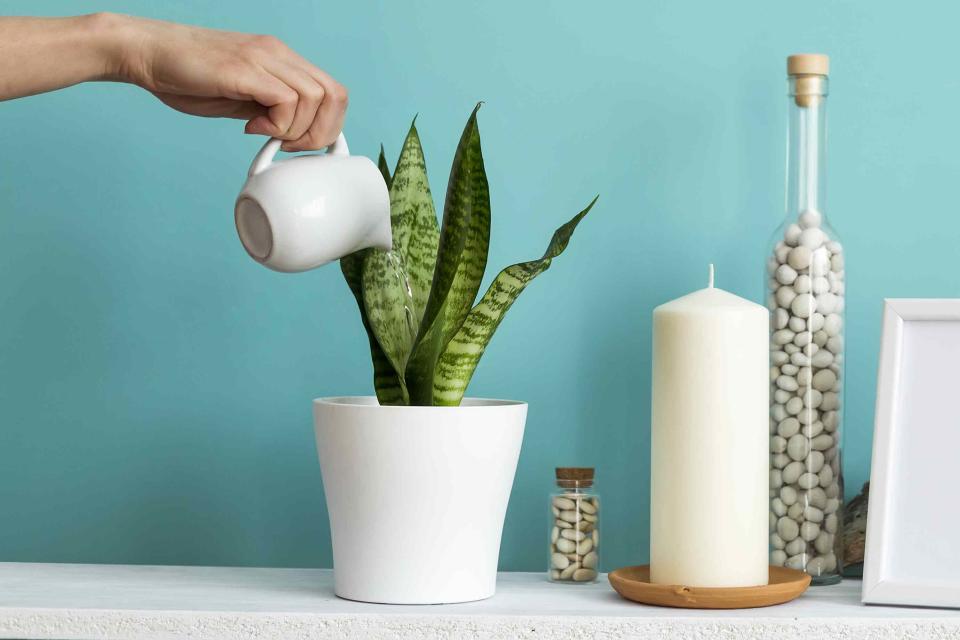
chriss_ns/Getty Images
Buying a houseplant or two is a quick and easy way to add a breath of fresh air to your space—but if you don’t have much (or any) experience with plants, you might feel overwhelmed about getting started.
Plants are, after all, living things that require attention and care to thrive. And with all the greenery out there to choose from, it can be tough to pin down the best option for you. Choosing an easy-to-care-for houseplant as a beginner can help you on your road to developing a green thumb—and prepare you to move on to more finicky plants later on. Keep reading for expert tips on keeping your plants alive and a list of the best houseplants for beginners so that you can feel more confident in your indoor gardening pursuits.
Related:16 Low-Maintenance Houseplants Most Likely to Survive All Year Long
Tips for Beginner Plant Parents
Before you venture out to buy a plant, do your research and choose an easygoing one that can tolerate beginner mistakes. “Don’t buy a rare, expensive plant for your first plant, though you may be tempted,” says Lisa Eldred Steinkopf, author of Houseplants: The Complete Guide to Choosing, Growing, and Caring for Indoor Plants.
Not sure what qualifies as easy? Well, that somewhat depends on your living conditions and how attentive you're prepared to be. But, an easy way to make sure you can keep a houseplant alive is to ensure that the plant's needs align with the environment you're able to provide. For example, if a particular species requires lots of light but you live in a basement apartment, keep looking.
It's also wise to start small, and buy just one or two plants that are relatively low-maintenance. This way, you can learn the ropes of plant care, without getting overwhelmed, then add more to your collection as your confidence grows.
And if a plant doesn’t make it? Don’t be discouraged from trying again. Steinkopf says there’s a plant out there for everyone, and the type you initially chose may not be the best match for you and your space.
Ready to try your thumb at caring for a plant? You’ve got this. Below, learn about nine of the best houseplants for beginners, according to experts.
Bromeliad
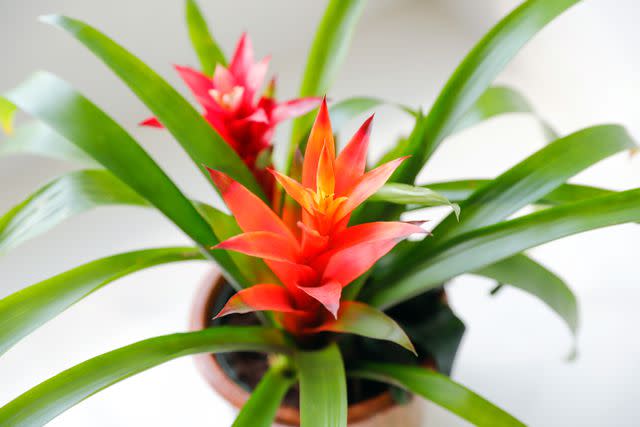
Daniela Duncan/Getty Images
If you’re looking to add a pop of color to your space, Lindsay Pangborn, a plant expert at Bloomscape, recommends the flowering bromeliad. Heartier than many other flowering plants, the bromeliad can handle irregular watering schedules, so it’s great for beginners getting used to plant-care schedules.
“Plant parents can keep the center of the plant, referred to as the ‘vase,’ filled halfway with water at all times,” Pangborn says. “Once this is done, the bromeliad will only need to be watered when its soil is completely dry.”
Peace lily
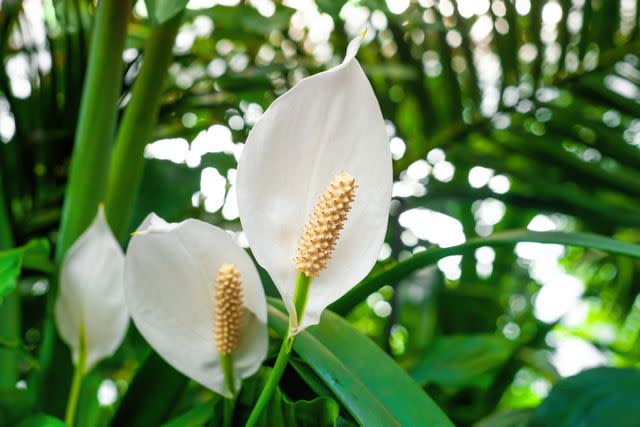
dmf87/Getty Images
Known for its vibrant leaves and beautiful, white blooms, the peace lily prefer lots of water at once on an infrequent schedule. If you fall behind, its long leaves can become droopy, but Pangborn says it’s also surprisingly forgiving with a good watering session. The peace lily is also a great beginner pick because it’s versatile—it can easily adapt to settings with bright indirect light or low light.
Related:10 Hard-to-Kill Indoor Plants That Don't Need Sunlight to Thrive
Pothos
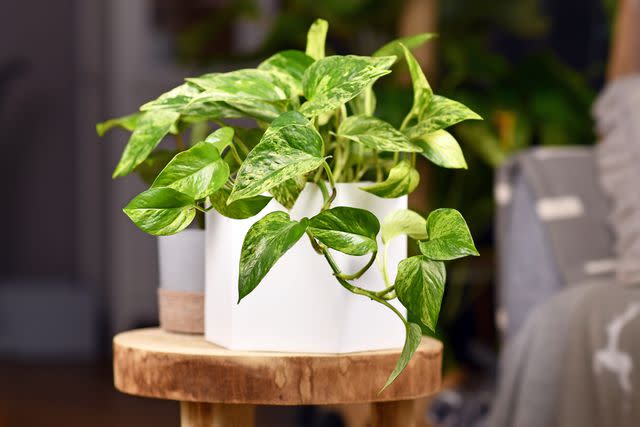
Firn/Getty Images
A quintessential beginner plant, the pothos is nicknamed the devil’s ivy because it’s that hard to kill. This low-care plant can tolerate lots of bright, indirect sun or even low light conditions (just steer clear of bright, direct sun). It’s also very forgiving of infrequent watering, says Steinkopf. It's actually better to let the soil totally dry out before adding any water, and droopy leaves are a good indicator your pothos is thirsty. Once you get the hang of your pothos, the leaves can trail multiple feet, and you can even train it to climb up a wall or moss pole.
Kangaroo fern
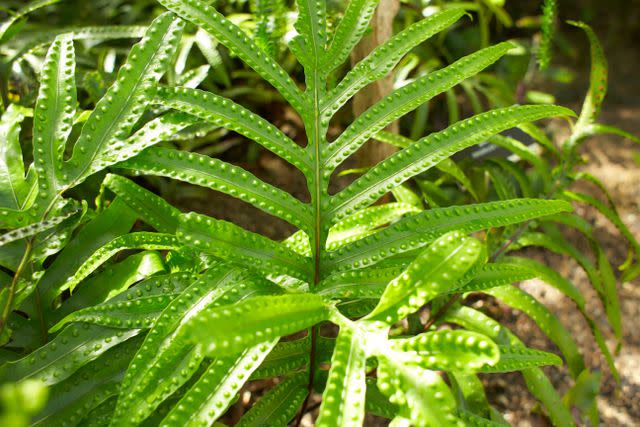
Irina Pislari/Getty Images
The kangaroo fern’s chunky fronds are tough and resilient, tolerant of most light conditions (except for spaces that receive heavy amounts of direct sunlight). Pangborn says this fern species can also tolerate a few dry periods if you tend to be forgetful about plants, but it should ideally be watered when about 25 percent of the soil volume feels dry. To encourage healthy growth, keep an eye out for dead fronds. “If you see any, feel free to cut their stems at the soil line with clean, sharp shears,” Pangborn says.
ZZ
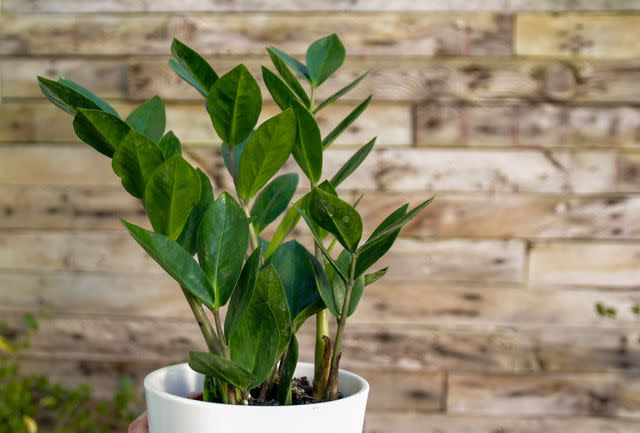
Kinga Krzeminska/Getty Images
Growing the ZZ plant is a lot easier than pronouncing its Latin name (Zamioculcas zamiifolia). “It can practically grow in a closet but would prefer bright [indirect] light, such as a north or east window or even a few feet from a south or west window,” Steinkopf says. Because its stem holds onto moisture, you can skip a few watering sessions, especially if your ZZ gets less light.
Monstera deliciosa
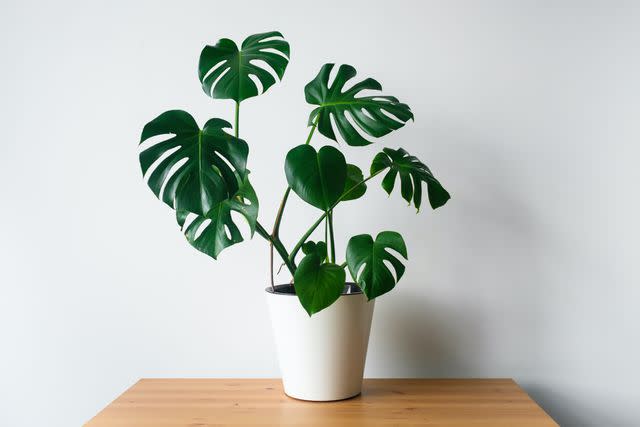
Kseniâ Solov'eva / EyeEm/Getty Images
Also known as the swiss cheese plant, the monstera grows large, tropical-looking leaves. Breanna Sherlock, in-house plant expert for the Planta App, says monstera are extra forgiving of common plant mishaps and thrive in most home environments. However, you’ll see more of the monstera’s trademark holes and splits when it’s healthy, so it pays off to learn how to keep this plant happy.
“Moderate light and occasional watering are the only things they really require,” she says. If you happen to overwater, it’s easy to propagate the monstera in water, so you can give it another try with a cutting.
Rhaphidophora tetrasperma (mini monstera)
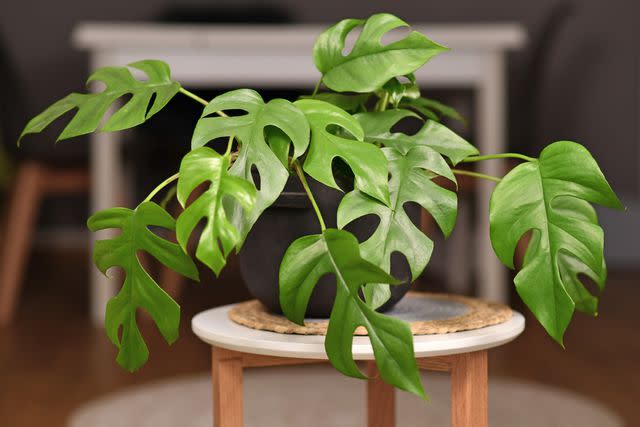
Firn/Getty Images
Named for its similarity to the monstera’s leaves, this plant is actually a totally different species—but Sherlock says it’s just as easy to care for.
“The fenestrated leaves are happy to climb up or vine downwards and they’ll always keep a beautiful lime-green hue,” she says. “They’re great for beginners because of their flexibility with lighting. A bright room in your home is all they need.” Although the tropical mini monstera does prefer higher humidity, they’ll do fine indoors as long as they’re kept away from vents and drafts.
Chinese evergreen
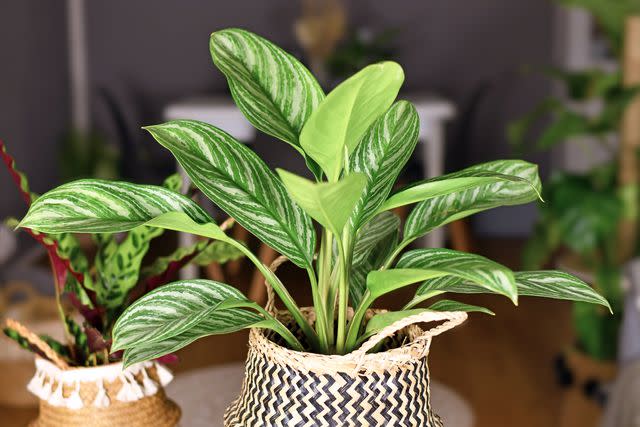
Firn/Getty Images
With the right light conditions—Steinkopf says the Chinese evergreen likes medium or bright sun—this classic houseplant can grow leaves with lots of pretty colors, including red, peach, and pink. The best part? They have succulent stems, which means they’re forgiving of drying out—perfect for folks who are working on their green thumbs. Just water your Chinese evergreen whenever the soil feels bone dry (typically every few weeks).
Snake plant
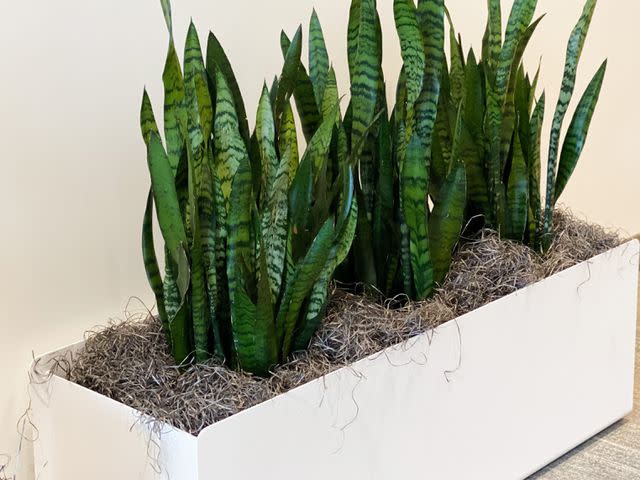
Catherine McQueen/Getty Images
Forgetful (or busy) plant parents will appreciate that this vertical-growing, variegated plant doesn’t need lots of attention. “Because they are succulents, they don’t need to be watered often,” Steinkopf says. Aim to water whenever the top few inches of soil feels dry and crumbly. The snake plant can tolerate pretty much any light condition, but it’ll especially thrive with lots of sunlight.
Related:6 Ideas for Decorating With Houseplants
For more Real Simple news, make sure to sign up for our newsletter!
Read the original article on Real Simple.

